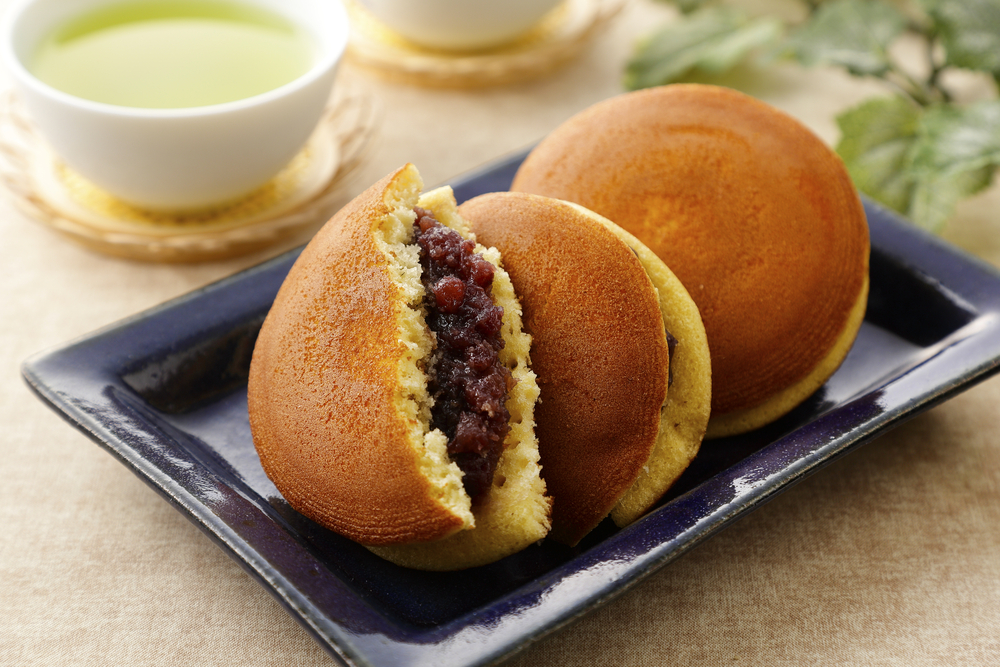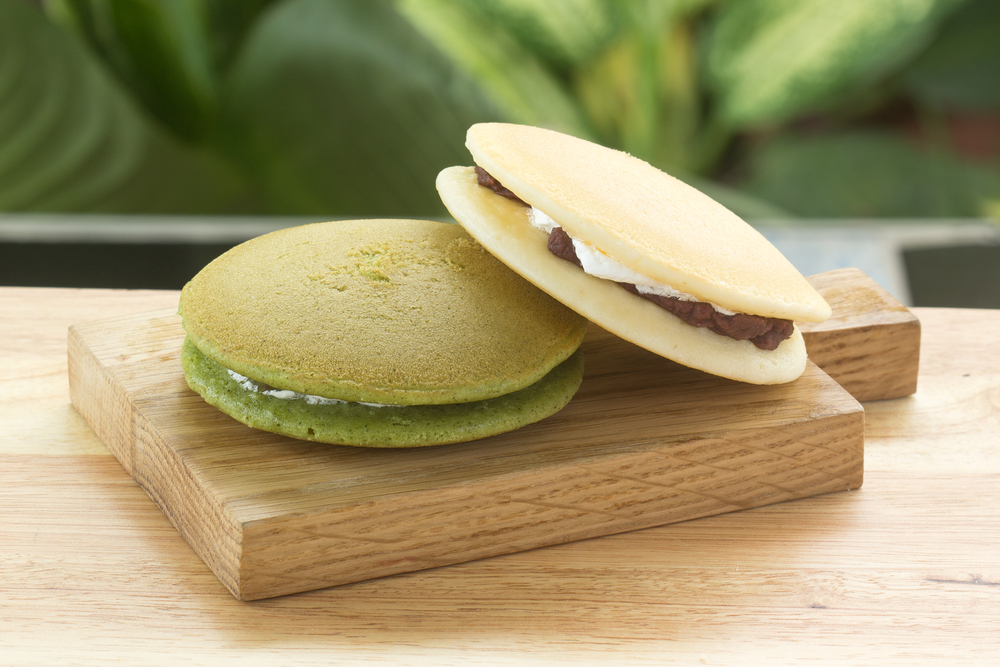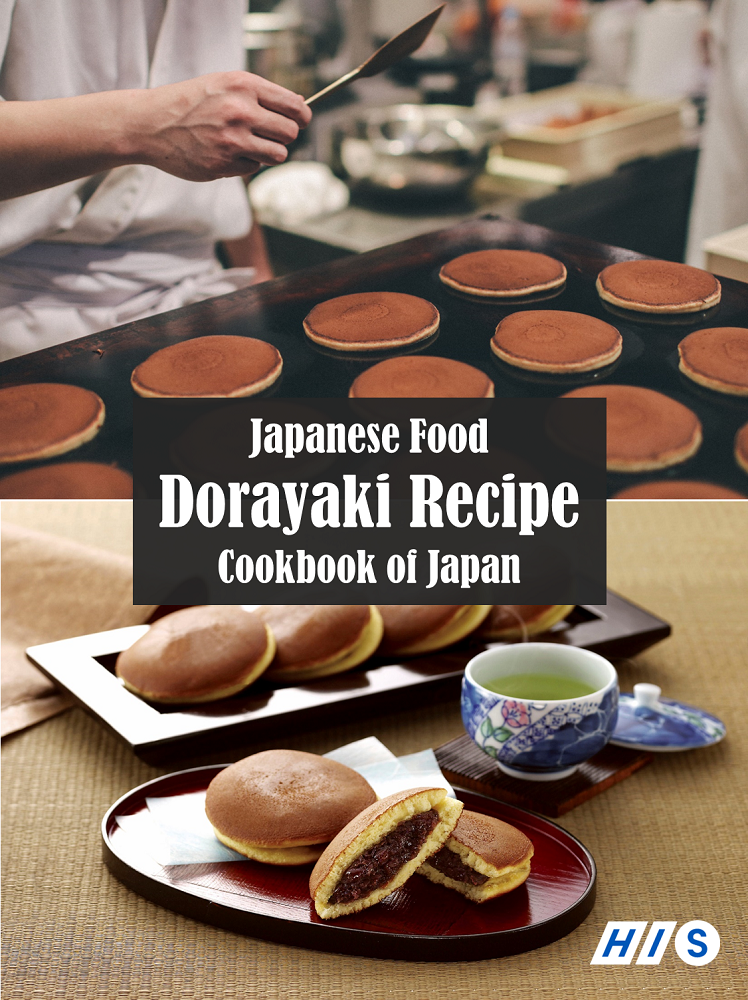Do, Re, Mi, Fa, So, La, Ti, Do-ra-ya-ki
For many who want to travel to Japan, the food is something that is one of the main things that people look forward to. With such a great variety, who wouldn't be excited? There are modern dishes, traditional dishes, as well as numerous desserts and sweets! One of the most famous traditional snacks of Japan is the Dorayaki. Made famous by one of Japan's most famous classic cartoons, this sweet snack is a favorite to enjoy as an after-school snack or as a tea-time cake. It's a traditional cakey snack that has since evolved to have many other different flavors as well~

What is a dorayaki you may ask? A dorayaki is essentially some sweet Japanese red bean called azuki that's been made into a paste called anko, sandwiched between two soft, small pancakes. The pancakes are more like castella, a Japanese sponge cake, than the classic pancakes that we may think of, but depending on where you get your dorayaki, it may be more fluffier than a traditional castella, and actually lean towards being more of a pancake. I'll admit, I'm not the biggest fan of red pean paste, but it's not bad when eaten like this. When I was younger, I was guilty of only eating the sweet pancakes, but as I've gotten older, I've come to appreciate it in its entirety. However, for those who are like me and are not a fan of azuki, there are also more modern takes on the classic dorayaki. This includes versions where the azuki is mixed in with whipped cream, ones where the azuki is replaced altogether with a decadent custard cream, and ones where the pancakes themselves are altered into unique flavors such as matcha pancakes.

Historically dorayakis were only one layer, but perhaps the way they are now actually makes it easier to eat. It's very convenient to take with you on as a snack, as many stores sell it prepackaged. Of course, you can always make your own that would probably be even more delicious because it's homemade and made using fresh ingredients! You can make everything from scratch or you can buy the filling and pancakes separately, try out different fillings, and just put it together how you desire.
| Dorayaki Recipe |
|
Red Bean Anko: Add beans to a pot or saucepan and add half of the water. Bring it to a boil and let cook for about 5-6 minutes. Drain Place beans back in pot/saucepan and bring to a boil with remaining water. Reduce heat and simmer for 2 hours until the beans are soft, add more water if needed. Cook a little less if you like your anko a bit more chunky. Drain Finally add sugar and salt to beans in pot and cook over medium-high heat. Stir in and cook for about 13 minutes until all sugar is disolved. Stir and cook more or less depending on your desired consistency. Place paste into an airtight container. Store in fridge or freezer if you would like to keep it for longer. Castella Pancake: Add eggs, sugar, and honey into a bowl and whisk together. Whisk until the mixture is of a thicker consistency. Sift dry ingredients (flour and baking powder) into the egg mixture and mix. Whisk while slowly adding in water. Mix until smooth. Oil pan and ladle small scoop onto a hot pan. Fry as you would pancakes, and wait until bubbles emerge. Then flip and cook the other side. Finally sandwich the anko beans between two pancakes. I personally like adding some butter to the hot pancake before adding the anko as it adds some depth to the flavor. Use caution as pancakes are hot. (You can let your pancakes cool before adding filling if you aren't adding butter) Feel free to add custard, whipped cream and fruits, or even chocolate instead of the anko beans for a less traditional but still delicious variation. *Disclaimer: This is not a professional recipe created by a trained chef. H.I.S. in no way provides any warranty, express or implied, towards the content of recipes on this website. It is the reader’s responsibility to determine the value and quality of any recipe or instructions provided and to determine the nutritional value (if any) and safety of the preparation instructions. |
Happy cooking and eating! <3
 |
